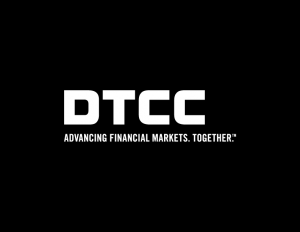The introduction of a new US central counterparty (CCP) for equity securities finance transactions (SFTs) has piqued the interest of, but also raised tough questions for, agent lenders. This is fair, as the CCP offers a new way of conducting securities lending business. While some operational and technology hurdles still need to get smoothed out, the main consideration is how the CCP collects Clearing Fund deposit from market participants. The flip side of the conversation is how agent lenders and beneficial owners take advantage of the CCP to deliver a competitive product, alongside increasing bank efficiency, changing demand patterns and fluctuating interest rates? In the effort to maintain securities loan utilization, the CCP offers immediate help. A guest post from DTCC.
The mechanics of how the National Securities Clearing Corporation (NSCC), as a CCP, collects margin are well publicized. Each participant must contribute an amount to the Clearing Fund based on a parametric Value-at-Risk (VaR) model. The more volatility in the underlying names, the higher the VaR figure. For market participants with two-sided business, netting can reduce the amount to under 2%. For highly volatile one-side names, the figure could be as high as 12% or more during the most extreme volatile periods. NSCC will not impose any liquidity requirement for members with respect to securities lending activity. The amount of collateral to call, or Clearing Fund requirement, is not a decision that NSCC or other CCPs make each day, but is rather the result of risk management models developed to comply with regulatory mandates, including US rules applicable to CCPs and the BIS/IOSCO Principles for Financial Market Infrastructures (PFMI).
For participation in NSCC’s SFT Clearing Service, the Clearing Fund contributions would be in addition to the standard 102% margin exchanged between borrowers and lenders that is marked to market daily, although borrowers and lenders are discussing variations to the actual margin amount when using the CCP for SFTs. The current bilateral securities lending market doesn’t work like this. Instead of a Clearing Fund contribution, the only value exchanged between borrower and lender is the 102% margin either in cash or non-cash collateral. In that regard, there is a tangible additional cost to participating in the CCP for SFTs that must be recognized. The benefits however would outweigh the margin cost.
One revenue and two cost reduction benefits
While there is an obviously greater expense to participating in the CCP in the form of the Clearing Fund contribution, the CCP offers one benefit that contributes to increased revenues and two that directly reduce market participant costs. The big revenue benefit is that the CCP opens up borrowing and lending opportunities to a wide range of new counterparties without bilateral credit limitations or credit risk concerns. For lenders faced with an excess of supply, the ability to access new borrowers can mean an immediate revenue opportunity.
The first cost reduction benefit is that Risk-Weighted Assets (RWA) of a CCP is 2% under Basel rules, compared to the up to 100% that some counterparties now face. This drops the balance sheet cost for borrowers and removes the lender bucketing process that borrowers and agent lenders currently support. Agent lenders would see a similar improvement in the reduction of indemnification exposures away from bilateral counterparties to the CCP if the agent lender is not the clearing member. If the agent lender is the clearing member, then there may be no RWA benefit, but there may still be other capital advantages related to single counterparty credit limits, which exempt exposures to qualifying CCPs.
The second cost reduction benefit is a smoothing out of post-trade operations, an ongoing cause of friction at some agent lenders. The use of the CCP would eliminate the entire Agent Lender Disclosure (ALD) rules process due to CCP novation, removing a burden to the industry and an uncertainty to borrowers for RWA calculation. Monthly bilateral billing also disappears as the CCP manages the entire process. We would also argue that the CCP removes default risk from the conversation, but we are aware that agent lenders see this as a non-issue following Basel III and Dodd-Frank balance sheet requirements.
An unquantified question for some industry participants is whether the trade-off of increased costs in the form of the Clearing Fund contribution is worth the reduced balance sheet and operational costs and increased revenue opportunity from more counterparties. The answer seems to be yes, it does, but a serious problem remains: who actually makes the Clearing Fund contribution?
Who will post margin?
The posting of collateral in the current bilateral securities lending model is a cut and dried affair: borrowers post 102% or more to lenders, who will either invest the cash or place non-cash collateral in tri-party. If the value of collateral varies from the agreed-upon amount, then excess is returned or additional collateral is called. Market participants are highly efficient with this process, and there have been no meaningful operational errors in the last dozen years including through the Lehman default.
An immediate obstacle to a US CCP market that requires Clearing Fund contributions from both borrowers and lenders is that some beneficial owners could not post collateral even if they wanted to. This means that agent lenders could be asked to post margin on behalf of the beneficial owners, something that certain agent lender divisions may regard as prohibitive from a capital perspective. It is largely considered, and we agree that, for the most part, beneficial owners and their representatives won’t post Clearing Fund deposits ; the market just would not support it.
The other alternative is that borrowers post margin. In this scenario, both borrowers and agent lenders know the cost drag that the CCP Clearing Fund will create. Mechanically this will require the borrower delivering cash and/or eligible securities to the agent lender, who then onward posts them to the CCP, but the end result is that the beneficial owner’s obligation is covered outside the cash collateral it receives back for reinvestments. Beneficial owners in turn will need to price their securities to make the transaction worth the borrower’s while. The numbers are easy to run: even a back of the envelope calculation can show that a 40% discount in the intrinsic rate of a security could make up for the increased cash and/or eligible securities that a borrower would need to place, especially if that borrower were already engaged in two-sided business with the CCP and netting down the VaR.
The decision that a borrowing clearing member will make to post margin on behalf of the lender comes down to their total benefit. Independent research has shown that the cost of clearing relative to the balance sheet and cost benefit is how choices are made at the desk level. Multiple technology vendors now offer the capability for firms to make this decision at the product and even trade level. Don’t take DTCC’s word for it – ask one of the many good pre-trade balance sheet analytics vendors in the market.
For their part, why would a beneficial owner choose to lend on the CCP at a 40% discount? Because the alternative is to receive no revenue at all. The initial supply envisioned on the CCP is General Collateral (GC) that has no home elsewhere. The demand for this business has dissolved as synthetic transactions, including Total Return Swaps, and broker-dealer internalization efficiencies have turned GC borrowing from beneficial owners into a third or fourth best option. This is a regulatory-driven conversation that cannot be solved in the bilateral market. The CCP offers an opportunity to return GC borrowing demand to a first choice, allowing lenders to again receive cash to reinvest in their own cash pools.
Large borrowers themselves are not falling over each other to make this deal; some may see participating in the CCP as a potential challenge to their market franchises if hard-to-borrow names were to become available to every SFT CCP member borrower, and not just to the counterparties that are on approved bilateral lender lists. That said, we already see an ecosystem of slightly smaller brokers and dealers that are eagerly arranging access through our Approved SFT Submitters. We expect the market to start modestly but can see more business picking up as large borrowers recognize that their market positioning cannot be protected indefinitely.
The first mover advantage
The question for agent lenders is whether they want to be in the first wave of CCP participants and get value from lending GC and any other worthwhile name on the platform to a range of market participants ready to borrow. There will be trade-offs on balance sheet and intrinsic rates in order to accommodate the reality that lenders aren’t likely to be able or willing to post margin, and borrowers with balance sheet constraints need to be compensated for that service. The same process that occurred for clearing OTC derivatives after 2010 will now shift to SFTs.
There are other industry benefits that will help but are not central to the cost conversation. Among these, the use of the CCP will support transparency, which will give regulators comfort that no new reporting is required. It is also possible that prime brokers will benefit from a reduction of net margin credits.
Some agent lenders think that there will be no first-mover advantage, but we respectfully disagree. On our FICC Sponsored Repo platform, first mover advantage has led to a few firms controlling an outsized portion of sponsor activity, while over two dozen new sponsors are now just signing on to compete for flow. We expect the same evolution of the SFT market, but this time potential sponsors will include both agent lenders and the same borrowers they currently lend to. Agent lenders may feel confident today about client stickiness, but the CCP will bring new dynamics to the entire market. First movers have the potential to gain market share and learn valuable lessons for their future benefit.
About the Author
 Laura Klimpel is Managing Director, Core Business Development Executive and is responsible for all Systemically Important Financial Market Utility (SIFMU) business development. Prior to DTCC, Laura spent four years at New York Portfolio Clearing and three years at Cleary Gottlieb Steen & Hamilton LLP. Laura received her B.A. degree, summa cum laude, from Truman State University in 1999 and her J.D. degree, cum laude, from Cornell University in 2007. She is a member of the New York Bar.
Laura Klimpel is Managing Director, Core Business Development Executive and is responsible for all Systemically Important Financial Market Utility (SIFMU) business development. Prior to DTCC, Laura spent four years at New York Portfolio Clearing and three years at Cleary Gottlieb Steen & Hamilton LLP. Laura received her B.A. degree, summa cum laude, from Truman State University in 1999 and her J.D. degree, cum laude, from Cornell University in 2007. She is a member of the New York Bar.


